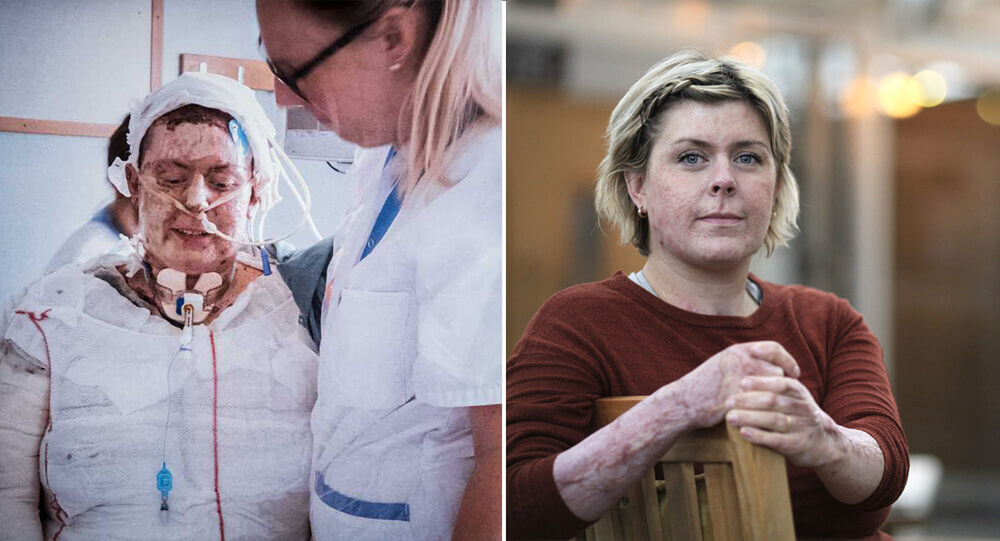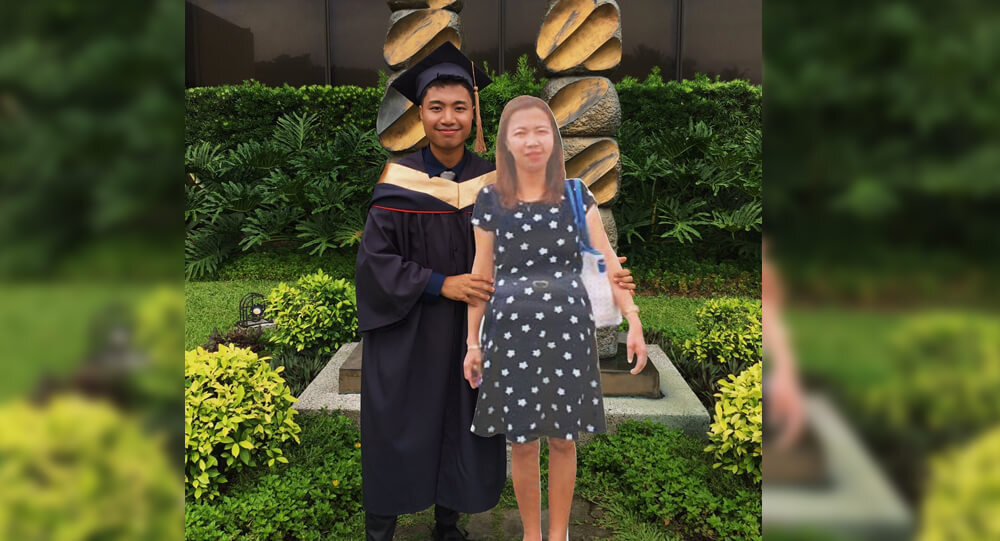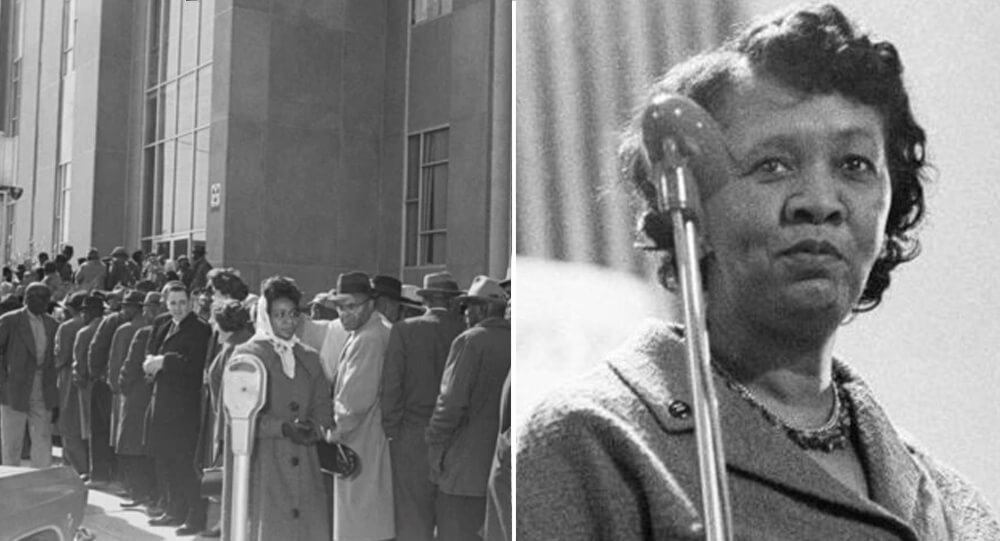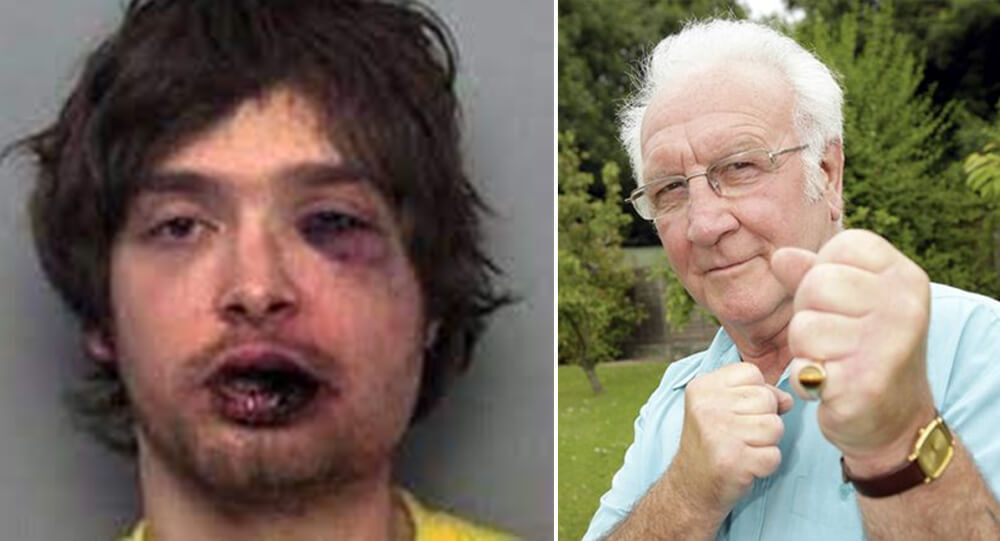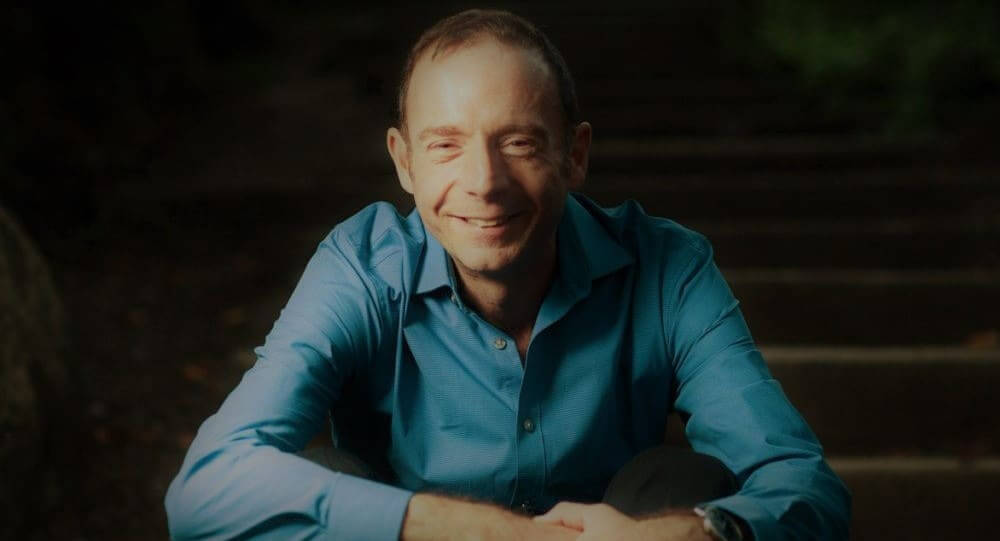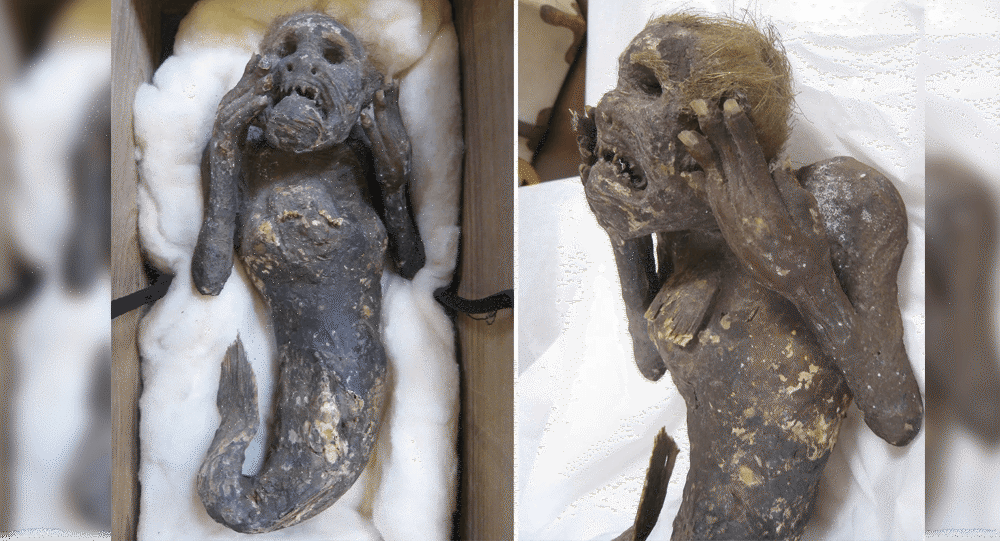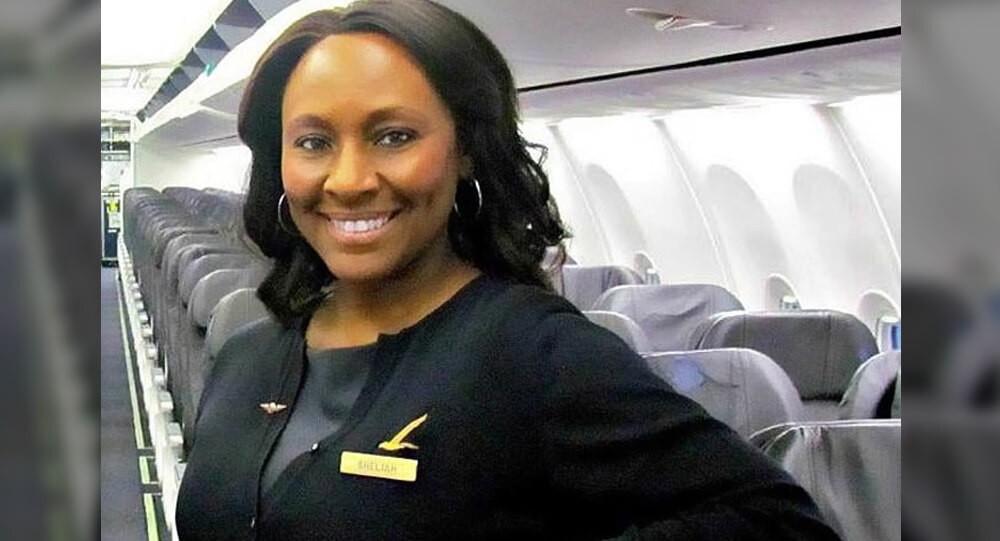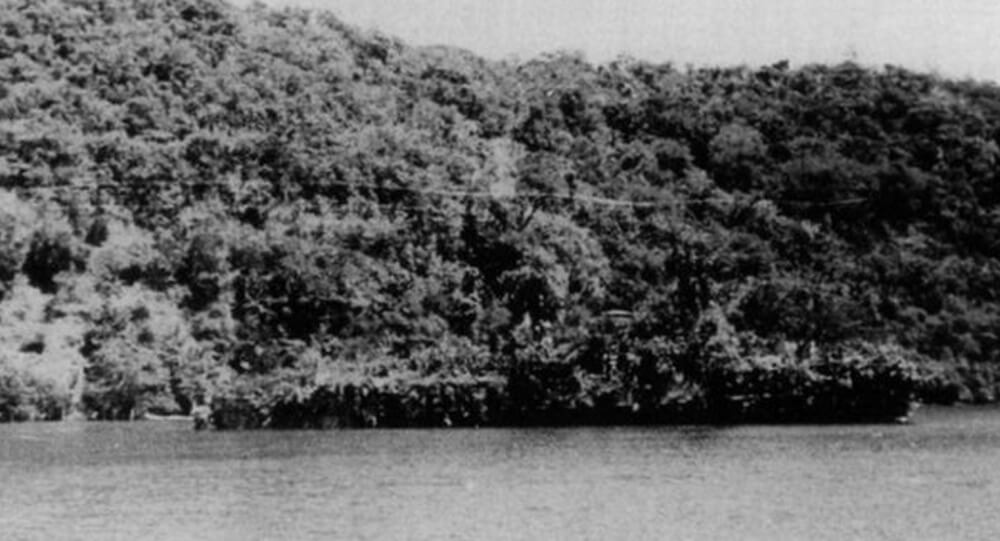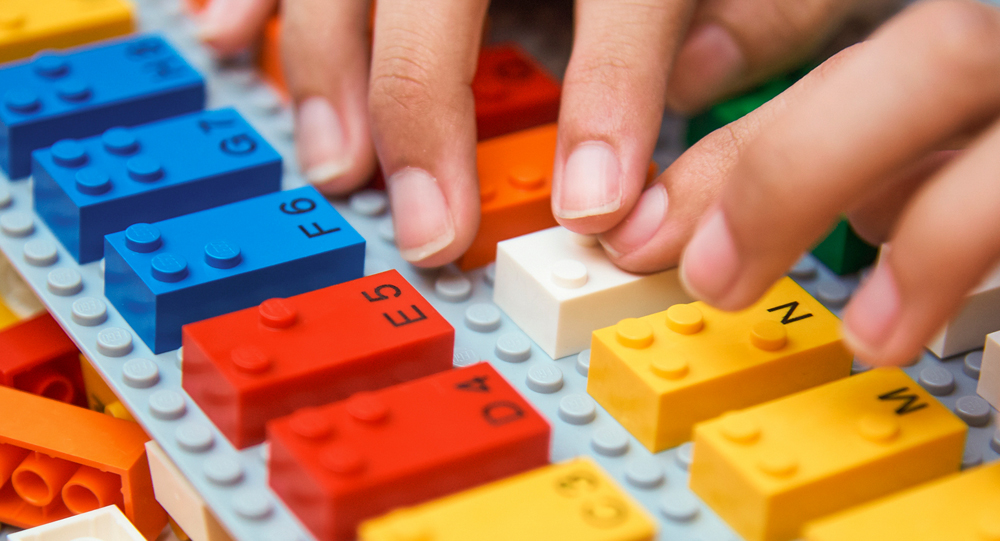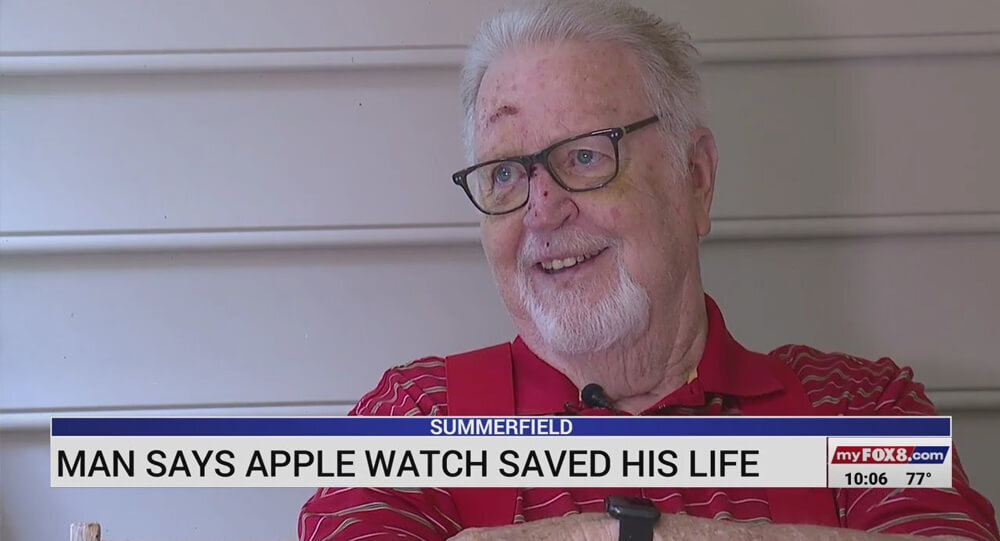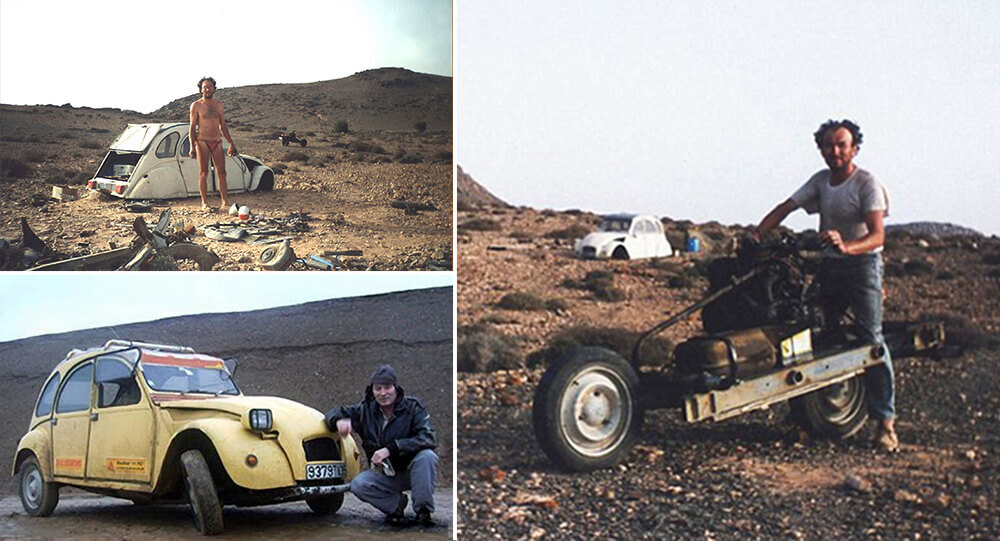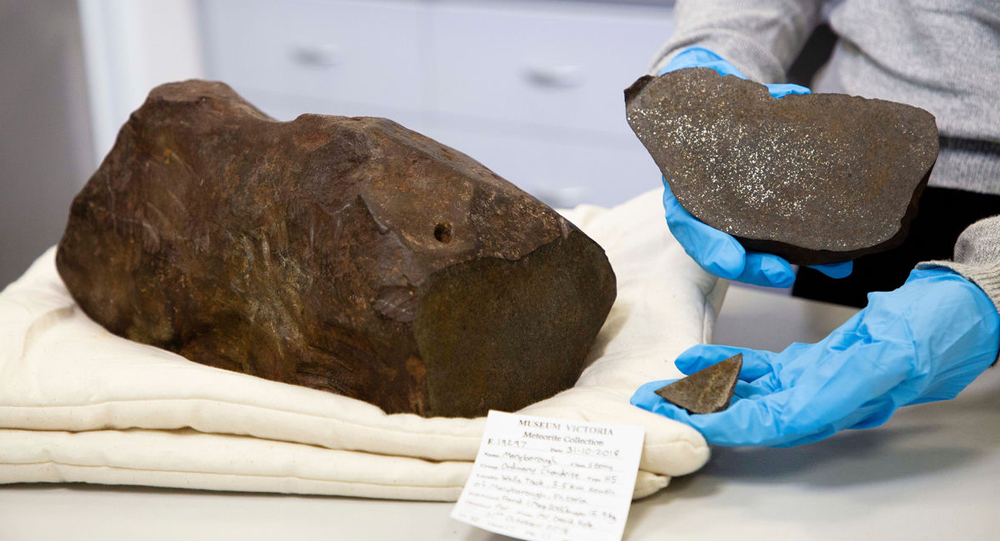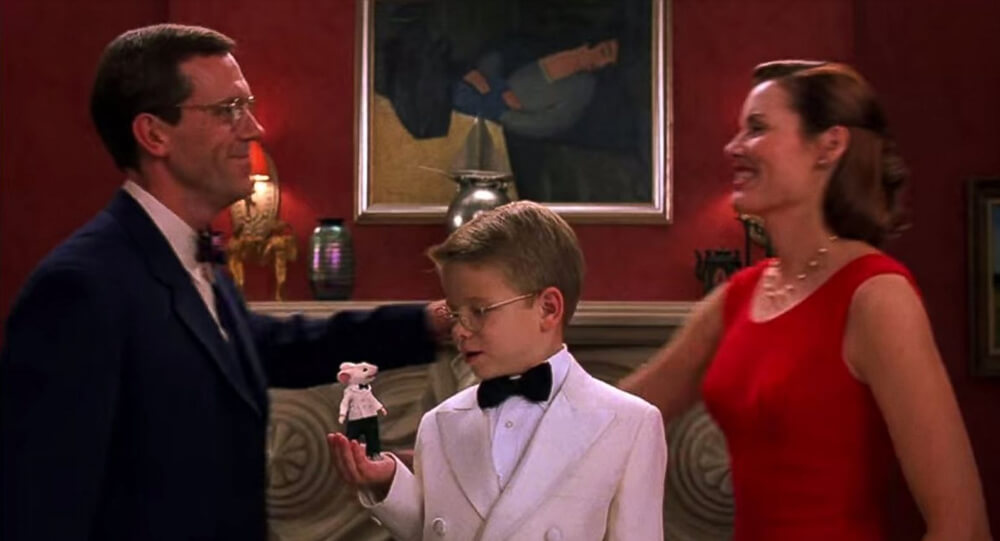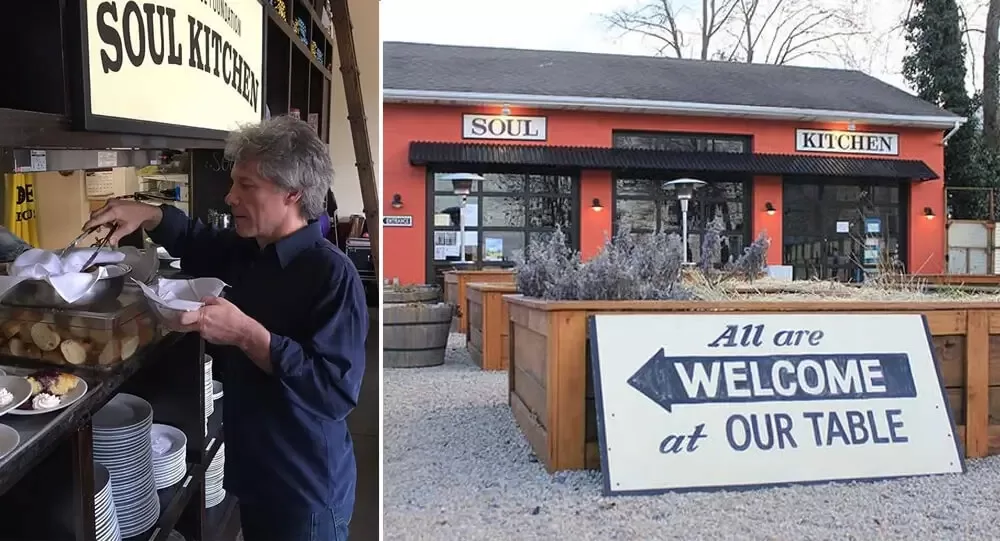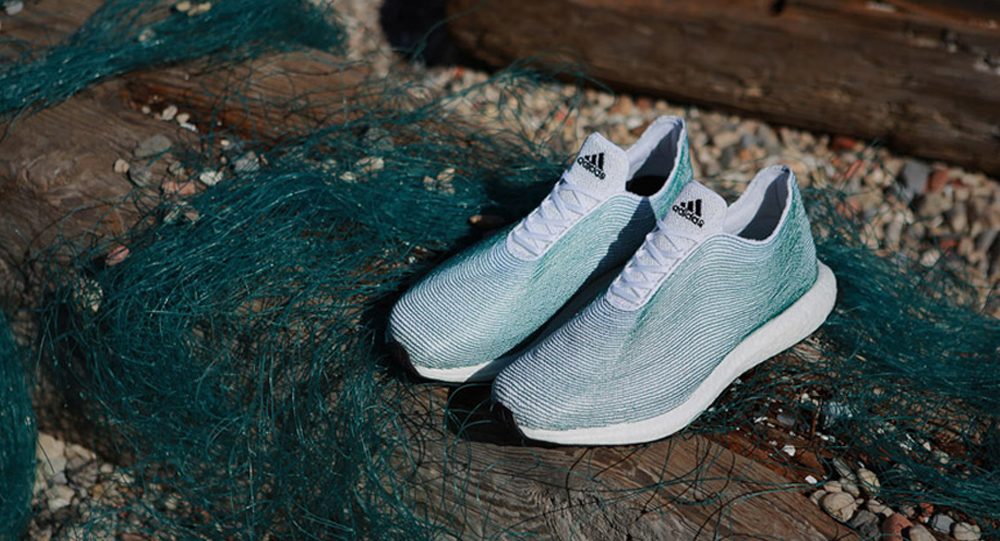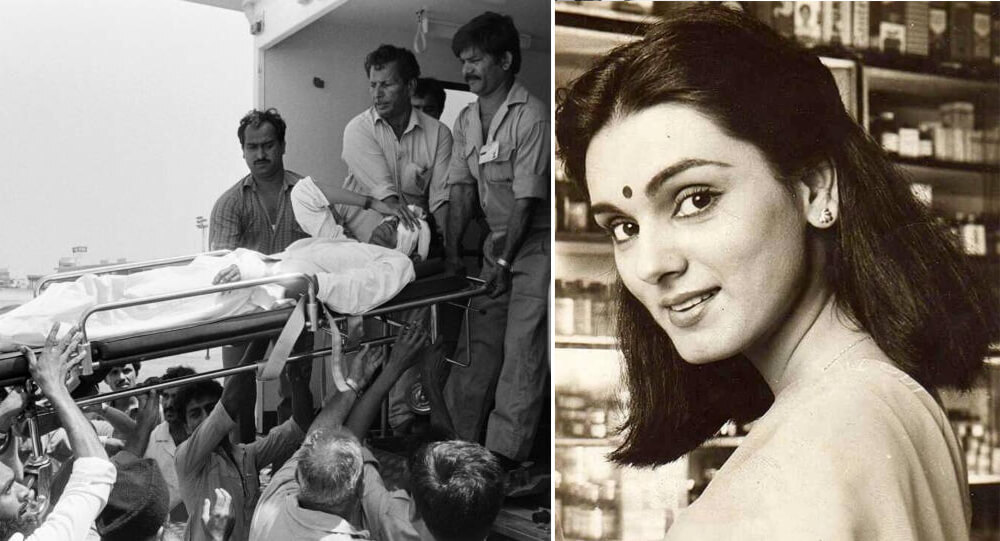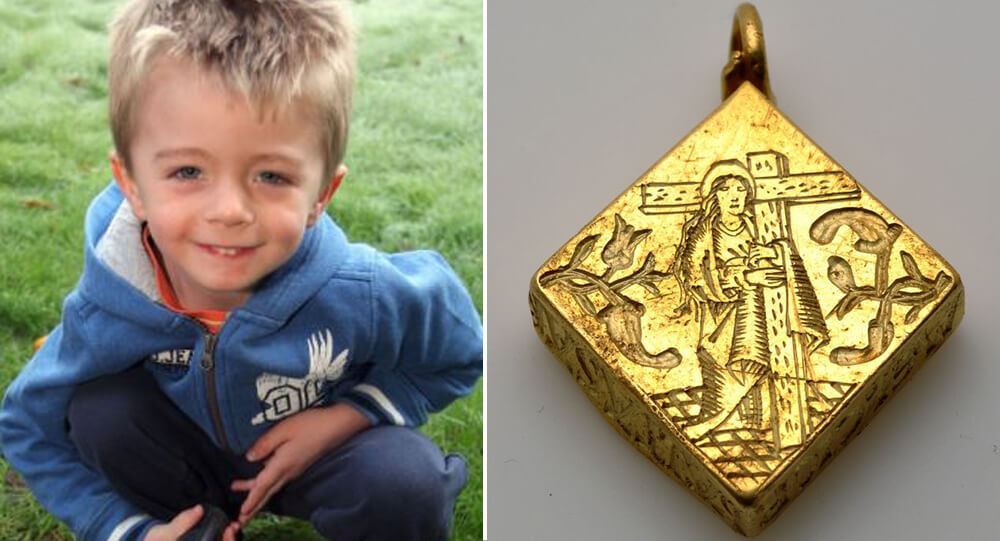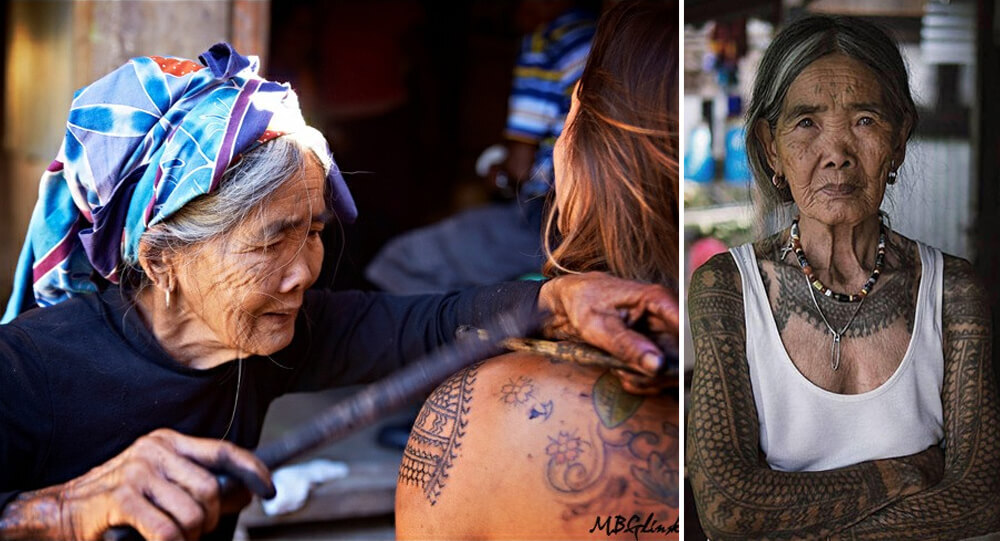
The world has been enthralled by the legendary tattoo artist from the Philippines, Whang-od Oggay, for her extraordinary talent and deep cultural heritage. Born in the isolated Kalinga province village of Buscalan, Whang-od is renowned as the last Mambabatok, a master of the ancient hand-tapping tattooing technique. She has gained international recognition for her contribution to the preservation of traditional Filipino tattooing techniques and the rich symbolism in her artwork. This article delves deeply into the life and journey of Whang-od, examining the traditional tattooing culture in the Philippines, the distinctive style and symbolism of her tattoos, her influence on the global tattoo community, the difficulties in maintaining traditional practices, and the lasting impact she has had on contemporary society.
Early Life and Background
You may wonder, who is Whang-od Oggay. She is a formidable tattoo artist from the Philippines, Whang-od is a member of the Butbut tribe and was born in 1917, She is from the Kalinga province. She had a straightforward yet fascinating upbringing in the mountains, surrounded by nature and her people’s rich cultural heritage.
The world first learned about Whang-od and her extraordinary tattooing talent in 2009. When a documentary crew happened upon her isolated village, they discovered a priceless find. It turned out that Whang-od had been using this age-old technique for over 80 years.
The Traditional Tattooing Culture in the Philippines
Tattooing has a long history in Filipino culture. It has been around for a very long time and was important to many indigenous tribes. Tattoos were more than just trendy accessories; they were also representations of one’s self, courage, and even spiritual beliefs. Tattoos were a vibrant tapestry of cultural heritage because each tribe had its own distinctive designs and meanings.
The raw, genuine experience is what traditional Filipino tattooing is all about; forget about expensive equipment and sterile settings. Whang-od and the other “mambabatoks” (traditional tattoo artists) create their works of art by tapping their hands together. They painstakingly etch complex patterns onto the skin of their customers using a small bamboo stick called a “batok” and a thorn covered in natural ink.
Whang-od’s Journey to Becoming a Tattoo Artist
The path Whang-od took to become the renowned tattoo artist she is today wasn’t easy. She received instruction in the art of batok from her own tribe’s elders and ancestors. She developed her abilities with perseverance and self-control, dedicating her life to maintaining the traditional art form.
The last mambabatok and sole surviving traditional tattooist of the Kalinga tribe is proudly known as Whang-od. She stands for cultural preservation, resiliency, and heritage. To get a tattoo from this living legend, people travel great distances from all over the world. She has undoubtedly developed into a rockstar in the world of tattoos.
The Unique Technique and Symbolism of Whang-od’s Tattoos
She uses a hand-tapped technique that is not for the fearful. It requires patience, accuracy, and a ton of endurance. But have faith—the outcome is well worth the effort. You’ll leave with a one-of-a-kind work of art permanently etched into your skin as a symbol of both your tenacity and Whang-od’s artistry.
The patterns created by Whang-od are not merely attractive; they contain rich symbolism. Every curve, dot, and line has a narrative to it, illustrating aspects of nature, tribal customs, or individual journeys. Your tattoo will tell a visual story of your journey and be inked by a skilled artist, so it will be more than just a cool design.
She is a living example of the cultural heritage of the Filipino people, not just a tattoo artist. So the next time you’re thinking about getting inked, why not plan a trip to the mountains to honor this living legend?
Whang-od’s Impact on the Global Tattoo Community
Tattoo artist Whang-od Oggay is not your typical artist. This fierce grandma from the Philippines has shot to fame around the world and established herself as a representation of traditional tattooing and native artistic talent. Tattoo enthusiasts and artists from around the world are drawn to her distinctive technique and stunning designs.
Whang-od’s name has become wildly popular due to the influence of social media and the rising appreciation for cultural diversity. Tattoo enthusiasts travel great distances to her isolated Kalinga province village of Buscalan just to get inked by the legendary Whang-od herself. To experience her artistry up close, people are prepared to travel great distances, climb challenging mountains.
Whang-od’s Legacy and Recognition in the Modern World
The number of tattoos Whang-od has cannot accurately reflect the impact she has had. Numerous awards and honors have been bestowed upon her for her lifetime’s work and commitment to maintaining traditional tattooing. She was given the Dangal ng Haraya Award in 2018, which is the highest honor bestowed by the Philippine National Commission on Culture and the Arts.
Beyond the awards, Whang-od has established himself as a cultural icon, proudly showcasing the long history of indigenous tattooing. She has made Kalinga famous, bringing in travelers interested in culture from all over the world. She has made an immeasurable contribution to the protection and advancement of Kalinga cultural traditions.
The village of Whang-od has developed from a quiet retreat to a bustling center of cultural tourism. To experience the magic of seeing a living legend in action, tourists swarm to Buscalan. However, this unexpected increase in tourism comes with a unique set of difficulties. It is a constant battle to strike a balance between the needs of tourism and the preservation of cultural heritage.
In Buscalan, efforts are being made to ensure sustainable tourism practices while upholding the traditions and customs of the community. To provide the community with opportunities for education, support, and economic growth, local organizations are collaborating. It’s crucial to strike a balance that preserves the integrity of the cultural heritage while allowing outsiders to appreciate and learn from it.

Croatian teenager wakes up from coma speaking fluent in German In 2010
In 2010, a Croatian teenager awoke from a coma to discover she could no longer speak Croatian but was fluent in German, a language she had just recently begun studying at school in the United Kingdom. reports in the press

Inspiring story of Emma Schols who Saved Her Six Kids From A Burning House
Emma Schols, a Swedish mother, saved all six of her children from a devastating house fire in 2019, running from room to room through flames while bleeding and losing skin. Against all odds, she survived with severe burns covering 90% of her body.

Oreo builds asteroid-proof bunker to protect its cookies and recipes
In October 2020, Oreo builds a concrete bunker in Svalbard, Norway, to protect their recipes in case of an asteroid impact. The vault also contains Oreos wrapped in Mylar and vials of milk powder.

Smart guy brings life-sized cutout of his late mother to his graduation
Even though that his mother passed away in 2016, a young man had a clever idea to make a life-size cutout of her and bring it to the event so that she could attend his graduation ceremony.

The fearless Annie Lee Cooper
Annie Lee Cooper was fired in 1963 after attempting to register to vote. She attempted it once more in 1965, but the sheriff ordered her to leave after prodding her in the neck with a club. She then punched him, causing him to fall to the ground. She was imprisoned before ultimately registering to vote. Following the passage of the Voting Rights Act, the sheriff was ousted and subsequently imprisoned for collaborating to transport drugs, but Annie Lee Cooper lived to reach 100 years old and bears her name to this day.

24-year-old burglar beaten by retired boxer victim
A 24-year-old knife-wielding burglar attempted to get into the home of a 72-year-old senior in Oxford, England, in 2009, but was left battered, bruised, and pinned to the ground. Frank Corti, the elderly, turned out to be a former boxing champion.

Timothy Ray Brown, who inspired millions of HIV-positive people, died of leukemia
Timothy Ray Brown, also known as "The Berlin Patient," was the first person to be HIV-free. He was diagnosed with leukemia in 2006 and had a bone marrow transplant in 2007 as part of his treatment. The transplant helped him overcome the otherwise incurable disease thanks to the rare, HIV-resistant donor.

Mystery of 300-year-old mummified mermaid is being probed
There is a 300-year-old mummified mermaid with 30 centimetres tall and features a human-like head, two hands with what appear to be fingernails, and its lower body that look like a fish tail. The “mermaid mummy” is being probed by Japanese scientists in an attempt to unravel the mystery of its existence.

A flight attendant uses a secret note to save a teen girl from sex trafficking
The flight attendant Shelia Fredrick. She spotted a distressed girl with an older man. She left a note in the restroom on which the victim wrote that she needed some help. The girl was rescued from a human trafficker after the authorities were informed.

People are freaked out because they keep finding 'help me' messages under the cap of Sobe bottles
With their bottle caps that said, "Help me, I'm trapped in SoBe factory," SoBe Beverage discovered the hard way that forced labor is serious business. This is an example of when humor can be overdone.

stranded hikers rescued by a life-saving iPhone feature
Stranded hikers were rescued by a life-saving iPhone feature that an awful lot of folks don't know a lot about.

Abraham Crijnssen – The Ship That Disguised Itself As An Island
During World War II a Dutch minesweeper evaded the Japanese for eight days disguised as an island. The crew covered the decks in cut trees and painted exposed surfaces to look like rocks. They moved only at night and anchored closed to shore by day, eventually escaping to Australia.

LEGO Braille Bricks: Revolutionizing Braille Learning Through Play and Inclusion
go Braille Bricks were launched in 2020 to help visually impaired children learn Braille through play. Each brick features the Braille alphabet and is fully compatible with standard Lego sets, allowing sighted peers to join in, fostering inclusivity and collaboration in learning environments.

Woman survives skydiving accident, discovers she's pregnant
2005, a woman performing her first solo skydive jump survived a parachute malfunction which caused her to slam face first into a parking lot at 50 MPH. During surgery doctors discovered she was pregnant. She made a full recovery and the baby was fine.

Apple Watch saves a 78 year old man from life threatening fall
An Apple watch saved the life of a 78-year-old man from North Carolina. When the man was unconscious and collapsed on his driveway, his Apple watch quickly sent an alert to emergency services.

Man Trapped in the Sahara Desert Constructs a Bike From His Broken-Down Car to Save His Life
A man who became lost in the desert disassembled his broken-down car and turned it into a functional motorcycle, which he used to escape.

A Pilot Survived 20 Minutes Outside A Flying Jet
In 1990, the captain of flight 5390 Timothy Lancaster got sucked out of his own plane when the window of the plane fell off. The crew held the captain’s leg for 30 minutes while the plane performed emergency landing. Everyone survived.

Water park in japan, ocean dome: Largest indoor water park in the world
The Seagaia Ocean Dome, located in Miyazaki, Japan, was the biggest indoor waterpark in the world. An "Ocean" six times the size of an Olympic pool, filled with 13,500 tons of unsalted, chlorinated water kept heated at 28 degrees Celsius and recognized as the largest simulated pool by the Guinness Book of World Records, measures 12,000 square meters of the sandy beach made from 600 tons of stone.

The Man Who Kept a “Gold” Rock for Years—Only to Discover It Was a 4.6-Billion-Year-Old Meteorite Worth a Fortune
A man cherished a heavy 17-kilogram rock for years, believing it to be solid gold. The surprising twist? Experts later revealed it was a rare, 4.6-billion-year-old iron meteorite—an ancient cosmic relic worth far more than gold. Dive into the fascinating story of this celestial treasure and what makes it so valuable.

Missing Masterpiece Discovered in the Background of ‘Stuart Little’
In 2009, Gergely Barki, an art historian, was watching the film Stuart Little (1999) when he spotted an original long-lost painting used as a prop. Called Sleeping Lady with Black Vase, this painting was the work of Hungarian avant-garde painter Róbert Berény. The painting had been considered lost after World War II.

JBJ Soul Kitchen: Bon Jovi's community restaurant
JBJ Soul Kitchen is a community restaurant by Jon Bon Jovi with no prices on the menu; customers donate to pay for their meals. If you are unable to donate you may do volunteer work in exchange for your family’s meal.

From Ocean Trash to Trendy Kicks: Adidas Sells 1 Million Eco-Friendly Shoes Made from Plastic Bottles
Adidas has sold over 1 million eco-friendly shoes made from ocean plastic. Each pair reuses the equivalent of 11 plastic bottles

'Press Your Luck' Was Hacked in 1984 by an Ice Cream Man
in 1984 an contestant made it onto the game show Press Your Luck. He discovered using his stop-motion VCR that the presumed random patterns of the game board were not random and memorized the sequences. On the game he was on, he won 45 consecutive spins. winning $110,237 in cash & prizes.

Neerja Bhanot, the braveheart flight attendant was never run away from a crisis
Neeja Bhanot, a 22 year old Indian flight attendant who helped hides 41 American passports aboard a hijacked plane. She died shielding three children from gunfire and was posthumously awarded bravery medals from India, Pakistan, and the United States.

A three-year-old boy discovers a $4 million pendant in England
A $4 million 16th-century gold pendant was discovered in 2010 by a three-year-old boy using his father's metal detector.

